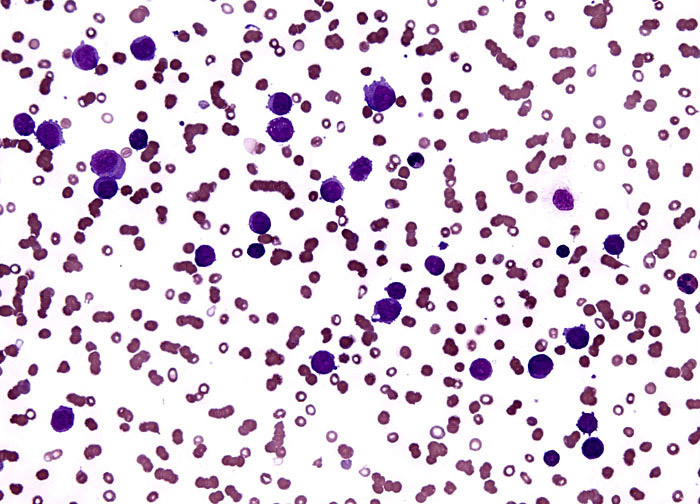
Granulocytic Leukemia at 20x Magnification
A group of neoplastic diseases primarily involving the bone marrow and characterized by an abnormal proliferation of white blood cells (leukocytes) are known as leukemias. In acute forms of leukemia, the disease strikes suddenly and progresses rapidly, whereas chronic forms are much more insidious and gradual in their development. Leukemias are generally classified based upon the precise type of white blood cells they involve in addition to whether or not they are acute or chronic. Thus, since normal, mature white blood cells form from stem cells in the bone marrow, a granulocytic leukemia is one that arises from stem cells that in a healthy individual would generate granulocytes, the most prevalent of the three basic leukocyte types (the others are lymphocytes and monocytes). Granulocytic leukemia is also sometimes referred to as myelogenous, nonlymphocytic, or myelocytic leukemia.















